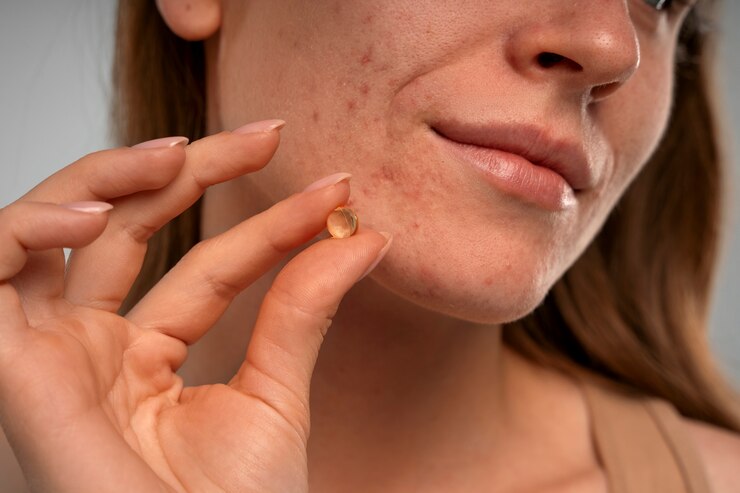Keloid scars are raised, thickened areas of skin that form due to an overproduction of collagen after a wound heals. Unlike regular scars, keloids grow beyond the original wound site and can become itchy, tender, or even painful. People prone to keloid formation often struggle with treating skin conditions such as acne because any skin irritation or injury can potentially lead to more keloid scars.
Acne Treatment Dubai, a common skin condition, results from clogged pores, bacteria, and inflammation. For individuals with a tendency to develop keloid scars, treating acne requires extra caution to avoid worsening scarring. Many wonder whether common acne treatments are safe or if they pose a risk for keloid formation.
The Link Between Acne and Keloid Scars:
Acne can lead to different types of scars, including hypertrophic scars and keloids. Keloid scarring is more common in individuals with darker skin tones and those with a genetic predisposition. When acne lesions heal, the skin’s excessive collagen production can result in raised scars. This means that not only does acne itself need treatment, but also the potential for keloid formation must be managed.
Safe Acne Treatments for People with Keloid Scars:
People with keloid-prone skin should approach acne treatment carefully. Some methods are safer than others, and dermatologists often tailor treatment plans to minimize scarring risks. Below are some of the safest acne treatment options for individuals prone to keloid scars:
Topical Treatments:
- Retinoids: These vitamin A derivatives help unclog pores, reduce inflammation, and promote cell turnover. They can be effective in preventing acne without causing excessive skin trauma.
- Benzoyl Peroxide and Salicylic Acid: These common acne-fighting ingredients help reduce bacteria and exfoliate the skin gently. However, they should be used cautiously to avoid excessive dryness and irritation, which may contribute to scarring.
- Silicone Gels and Sheets: These can be used alongside other treatments to minimize the appearance of scars and prevent keloid formation.
Oral Medications:
- Antibiotics: Oral antibiotics such as doxycycline or minocycline can help reduce inflammation and control acne bacteria, preventing severe breakouts that could lead to keloid scarring.
- Isotretinoin: This powerful acne medication is often prescribed for severe cases. However, it must be used under strict medical supervision as it can cause dryness and irritation, potentially worsening scarring.
Chemical Peels and Laser Therapy:
- Mild Chemical Peels: These can help exfoliate the skin and improve acne without causing deep injury. Strong chemical peels, however, should be avoided as they may trigger keloid formation.
- Laser Treatments: Fractional lasers and other non-ablative lasers can help with acne scars, but aggressive laser treatments should be avoided as they may worsen keloid formation.
Steroid Injections:
- For individuals who already have keloid scars from Acne Treatment in Dubai, steroid injections can help reduce the size and thickness of the scars. These injections can also be used to prevent new keloid scars from forming after acne lesions heal.
Microneedling (with Caution):
- Microneedling is a treatment that promotes collagen remodeling. However, in keloid-prone individuals, it must be done cautiously by an experienced dermatologist to prevent excessive collagen production that could worsen scarring.
Acne Treatments to Avoid for Keloid-Prone Skin:
While many treatments can be effective, some may pose risks for individuals prone to keloid scars. These include:
- Aggressive Laser Treatments: Ablative lasers that cause deep skin damage can trigger excessive collagen production, leading to keloids.
- Deep Chemical Peels: Strong chemical peels may cause irritation and increase the risk of keloid scarring.
- Surgical Excision: Removing acne-related keloids surgically can lead to even larger keloids forming in their place.
Preventing Keloid Scars While Treating Acne:
Prevention is key for individuals with keloid-prone skin. Here are some strategies to minimize the risk of keloid formation while treating acne:
- Early Acne Treatment: Addressing acne in its early stages reduces the chances of deep, inflammatory breakouts that could lead to keloid scars.
- Avoid Picking or Squeezing Pimples: Manually irritating acne lesions can cause trauma, increasing the risk of scarring.
- Use Sun Protection: UV exposure can worsen scars. Using sunscreen (SPF 30 or higher) helps protect healing skin.
- Follow Dermatologist’s Recommendations: A customized skincare plan ensures safe acne management without triggering excessive scarring.
Conclusion:
Yes, acne treatment can be safe for individuals with keloid-prone skin, but it requires a careful, tailored approach. Choosing the right topical treatments, oral medications, and minimally invasive procedures can help manage acne without worsening scarring. It is essential to consult a dermatologist for a personalized plan that balances acne control with keloid prevention. By taking the right precautions and opting for safe treatment methods, individuals with keloid-prone skin can achieve clearer skin while minimizing the risk of further scarring.



